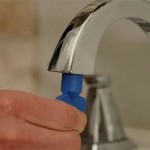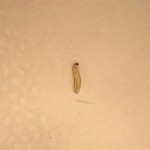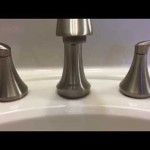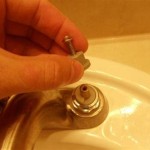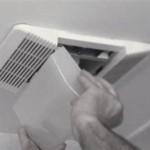How to Fix a Bathroom Sink Stopper
A malfunctioning bathroom sink stopper can be a frustrating inconvenience. Whether it's stuck open, closed, or simply not working at all, fixing it can seem like a daunting task. However, with the right tools and knowledge, you can easily troubleshoot and repair most common sink stopper issues. This guide will provide you with a comprehensive understanding of different types of sink stoppers, common problems, and step-by-step instructions for fixing them.
Types of Bathroom Sink Stoppers
Bathroom sink stoppers come in various designs, each with its own mechanism and potential issues. The most common types include:
-
Lift Rod Stopper:
These are the most traditional type, featuring a rod connected to a lift lever that raises and lowers the stopper. The rod can become corroded or stuck, preventing smooth operation. -
Push-Up Stopper:
This type utilizes a push button that raises and lowers the stopper. The button can become sluggish or jammed, hindering its function. -
Pop-Up Stopper:
These stoppers operate with a single lever that rotates to open and close the drain. The lever can become loose or damaged, affecting its ability to seal the drain. -
Flip-Up Stopper:
This is a more modern design where the stopper is flipped up and down to control the drain. The stopper can detach from the drain opening or become stuck in the closed position.
Troubleshooting Common Problems
Before attempting any repairs, it's essential to diagnose the specific problem with your sink stopper. Some common issues include:
-
Stopper Stuck Open:
The drain may not close properly, causing water to flow continuously. -
Stopper Stuck Closed:
The drain may not open, preventing water from draining. -
Stopper Leaks:
Water may leak from around the stopper when it's closed. -
Stopper Loose or Shaky:
The stopper may not feel secure or may wobble when in use.
Fixing a Stuck Stopper
A stuck stopper can be caused by debris, corrosion, or a malfunctioning mechanism. Here are some steps to try to resolve the issue:
-
Remove Debris:
Begin by removing any large debris or hair that might be obstructing the stopper mechanism. Use a pair of pliers or a long-handled tool to carefully remove any visible obstructions. -
Clean the Stopper:
For a lift rod or push-up stopper, remove the stopper from the drain opening and clean it thoroughly with a toothbrush and soapy water. Pay attention to any moving parts or seals. -
Apply Lubricant:
Use a silicone-based lubricant on the moving parts of the stopper, such as the rod, lever, or seals. This can help reduce friction and ease movement. -
Inspect for Damage:
If cleaning and lubrication don't resolve the issue, inspect the stopper for any signs of damage, such as cracks, breaks, or missing parts. If the stopper is damaged, it will need to be replaced.
For a pop-up stopper, remove the lever and clean the mechanism with a toothbrush and soapy water. Inspect the lever for any damage or wear. If the lever is loose, it may need to be tightened or replaced. If the stopper is stuck closed, try pushing it up gently with a tool or using a pair of pliers to pry it open. Be careful not to damage the stopper while doing this.
For a flip-up stopper, check if the stopper is properly attached to the drain opening. If it has detached, try to reconnect it. If it is stuck in the closed position, try to gently pry it open with a tool. Avoid using excessive force to prevent damage.
Replacing a Damaged Stopper
If you find that the stopper is damaged beyond repair, you will need to replace it with a new one. Replacing a sink stopper requires a few basic tools and a new replacement stopper.
To replace the stopper, first, disconnect the water supply to the sink. Once the water supply is off, remove the old stopper. For a lift rod stopper, this usually involves unscrewing a nut that holds the stopper in place. For a push-up stopper, you may need to remove a retaining clip or nut. For a pop-up stopper, the old stopper may be held in place by a threaded ring, which needs to be unscrewed. For a flip-up stopper, the stopper may be held in place by a clip or a threaded nut.
Once the old stopper is removed, clean the drain opening and install the new stopper. Make sure the new stopper is properly aligned and secured in place with any nuts or clips. If the new stopper is a lift rod or push-up type, make sure the rod or lever is connected to the stopper. Reconnect the water supply and test the new stopper to ensure it operates properly.
By following these steps, you can effectively fix most common bathroom sink stopper issues. However, if you are unsure about any part of the repair process or if the problem persists, it is best to consult a professional plumber.

How To Fix A Bathroom Sink Drain Stopper 4 Easy Solutions

Quick Tip 26 Pop Up Stopper Sticks Misterfix It Com

How To Replace A Sink Stopper Quick And Simple Home Repair

Fixing Tricky Pop Up Drain Sink Stopper Mechanisms Efficient Plumber

How To Fix A Bathroom Sink Stopper Step By Guide London Post

How To Replace A Rusty Sink Drain Howtolou Com

How To Replace Or Maintain A Sink Pop Up Drain Assembly

How To Fix A Bathtub Or Sink Pop Up Stopper

Bathroom Sink Popup And Stopper Problems

How To Fix A Bathroom Sink Stopper This Old House
Related Posts
